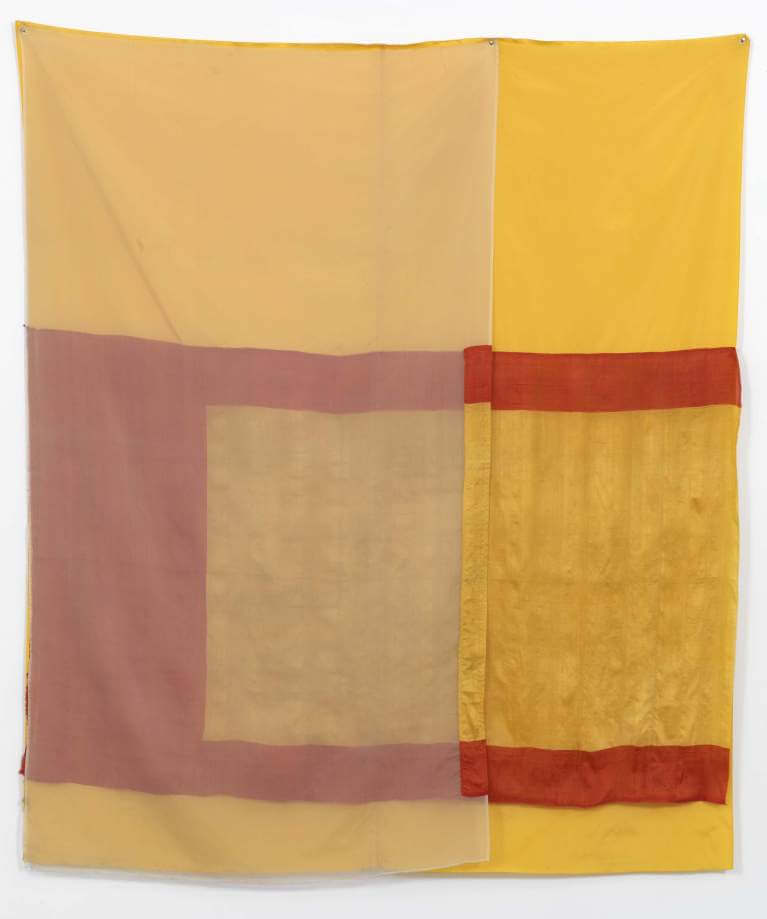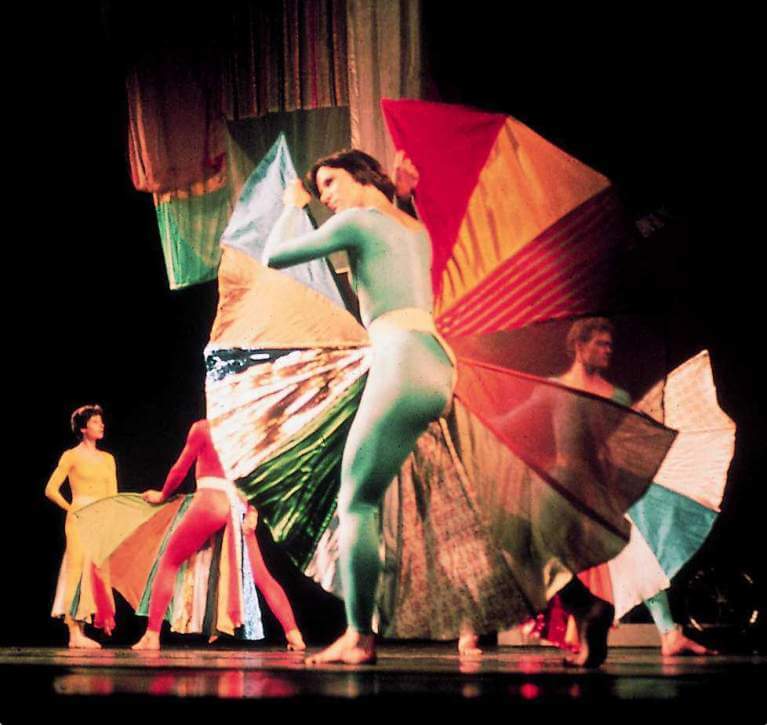
Mirage (Jammer), 1975
Mirage (Jammer)
Rauschenberg began the Jammer series in fall 1975, following a trip he had made the previous spring to Ahmadabad, India, a center of textile production. Bringing fabrics back to his studio in Captiva, Florida, the artist remarked on the beauty and luxury of the textiles and the sumptuousness of the colors, which appeared in marked contrast to the hardships he had observed in India: “the cruel combination of disease and starvation and poverty and mud and sand and yet it was all punctuated with maybe just that one piece of beautiful silk.” Mirage (1975), characteristic of the series, is made from sewn fabric; brightly colored and translucent silk, devoid of imagery that is loosely tacked to the wall, allowing gravity to determine its precise disposition. The name of the series is derived from “windjammer,” a type of sailboat, and the name “mirage” has a watery association. Mirage, referring to an optical illusion often perceived at sea, captures the fleeting sensibility of the piece.








